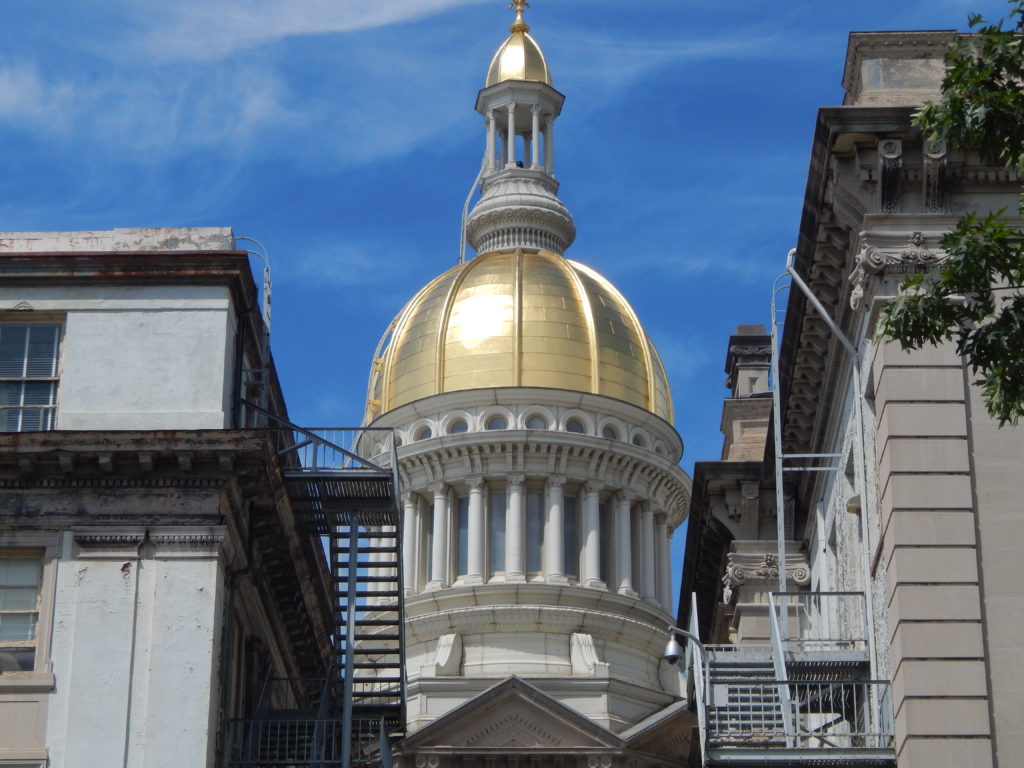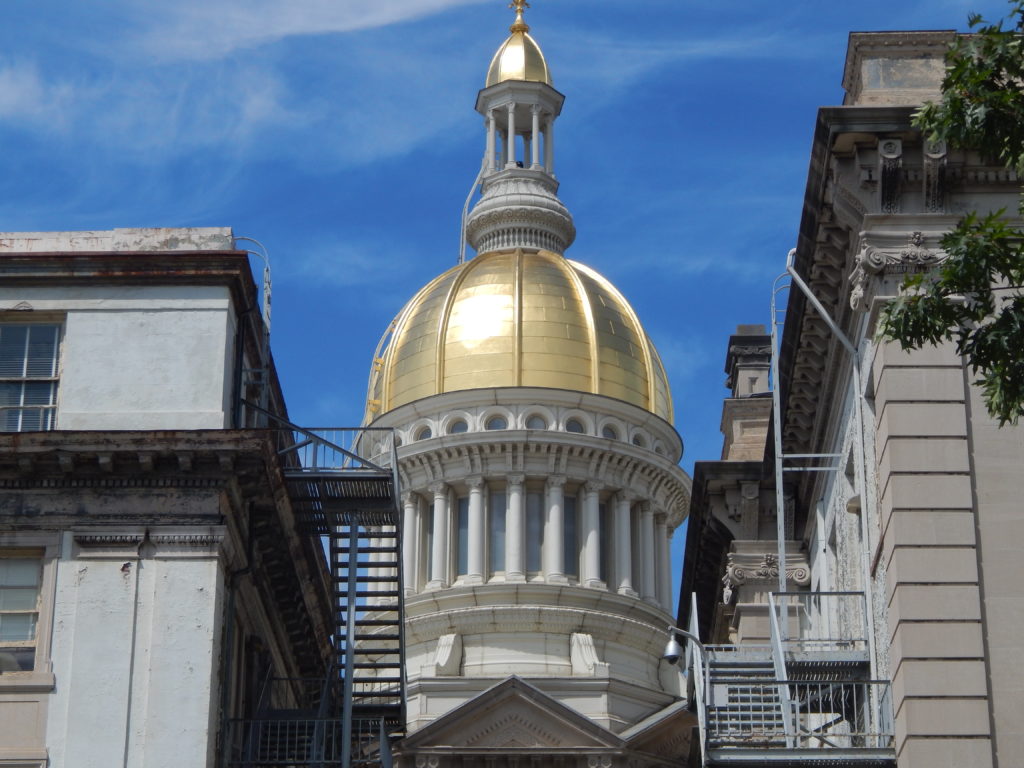
As they sit on the largest combined “off-year”1 cash reserves in more than a decade, the so-called “Big
Six” committees so far are going easy on the fund-raising pedal, according to second quarter reports filed with the New Jersey Election Law Enforcement Commission (ELEC).
The two state parties and four legislative leadership committees collectively reported $1.9 million in fundraising during the first six months of 2024. That is a two percent increase above the fund-raising average for six federal election years dating back to 2014.
On the other hand, they reported a combined war-chest of more than $2.2 million. That figure is 72 percent above average for the six elections. Compared to four years earlier, Republican reserves are 55 percent higher while Democratic war chests are 189 percent more.
TABLE 1
CAMPAIGN FINANCE ACTIVITY BY “BIG SIX” THROUGH 2ND QUARTER BY YEAR
YEAR RAISED SPENT CASH-ON-HAND STATE ELECTIONS
2013 $3,382,737 $1,874,081 $3,189,889 Governor and Both Houses
2014 $1,276,109 $1,319,714 $ 800,994 Federal
2015 $2,476,599 $1,983,389 $2,160,318 Assembly
2016 $1,661,559 $1,513,987 $1,127,086 Federal
2017 $2,751,561 $2,205,599 $2,263,401 Governor and Both Houses
2018 $2,991,664 $2,416,353 $1,321,894 Federal
2019 $2,283,313 $1,729,263 $2,075,620 Assembly
2020 $1,342,492 $1,090,629 $ 911,929 Federal
2021 $4,836,037 $3,529,208 $2,678,213 Governor and Both Houses
2022 $2,167,841 $1,737,175 $1,450,701 Federal
2023 $3,610,199 $2,148,262 $4,060,824 Senate and Assembly
2024 $1,922,526 $1,449,013 $2,246,644 Federal
AverageSix Federal Election Years $1,893,699 $1,587,812 $1,309,875
Difference- % 2% -9% 72%
Along with having solid reserves midway through a non-state election year, party leaders on both sides
also know fund-raising should be easier next year due to much higher contribution limits.
In 2025, the governor’s seat and all 120 legislative offices will be up for reelection.
Prior to passage of P.L. 2023 c.30 on April 3, 2023, the two state parties and four legislative leadership
committees could raise just $25,000 annually from a single donor.
Next year, donors will be able to deposit $79,000- more than three times as much as before the new law each year to accounts that directly fund campaign expenses of all Big Six committees.
In addition, donors will be able to contribute another $39,500 annually to the two state parties using new “housekeeping” accounts.
These new accounts are earmarked solely for administrative expenses, including mortgages, rent, taxes,
compliance costs, legal bills and collective bargaining outlays. County parties also can create housekeeping accounts.
TABLE 2
FUNDRAISING BY “BIG SIX” COMMITTEES
JANUARY 1 THROUGH JUNE 30, 2024
REPUBLICANS RAISED SPENT** CASH-ON-HAND NET WORTH*
New Jersey Republican State Committee $ 254,885 $ 125,435 $ 157,060 $ 157,060
Senate Republican Majority $ 144,371 $ 70,932 $ 147,315 $ 147,315
Assembly Republican Victory $ 126,340 $ 52,446 $ 145,001 $ 143,425
Sub-Total- Republicans $ 525,596 $ 248,814 $ 449,376 $ 447,800
Difference Versus Second Quarter 2020 (Dollars) $ 97,130 $ (94,977) $ 159,574 $ 169,638
Difference Versus Second Quarter 2020 (Percent) 23% -28% 55% 61%
DEMOCRATS
New Jersey Democratic State Committee $ 647,918 $ 723,357 $ 59,098 $ 28,904
Senate Democratic Majority $ 239,364 $ 145,550 $ 986,150 $ 986,150
Democratic Assembly Campaign Committee $ 509,649 $ 331,292 $ 752,020 $ 721,581
Sub-Total- Democrats $1,396,931 $1,200,199 $1,797,268 $1,736,636
Difference Versus Second Quarter 2020 (Dollars) $ 482,905 $ 453,361 $1,175,141 $1,207,594
Difference Versus Second Quarter 2020 (Percent) 53% 61% 189% 228%
Total- Both Parties $1,922,526 $1,449,013 $2,246,644 $2,184,435
Difference Versus Second Quarter 2020 (Dollars) $ 580,034 $ 358,384 $1,334,715 $1,377,231
Difference Versus Second Quarter 2020 (Percent) 43% 33% 146% 171%
*Net worth is cash-on-hand adjusted for debts owed to or by the committee.
**Some spending totals may exceed fundraising totals because the committee dipped into reserves or incurred debt.
State parties and legislative leadership committees are required to report their financial activity to the
Commission on a quarterly basis.
The reports are available on ELEC’s website www.elec.nj.gov. ELEC also can be accessed on Facebook
(www.facebook.com/NJElectionLaw).
(Visited 27 times, 27 visits today)
The second quarter of 2024 has been a crucial period for the electric industry, with the Big Six companies making significant strides in their performance. Insider NJ has conducted an in-depth analysis of these companies to provide a comprehensive overview of their financial health and strategic initiatives during this period.
First up is Edison International, which reported a strong quarter with a 10% increase in revenue compared to the same period last year. The company attributed this growth to higher electricity demand and successful cost management strategies. Edison International also announced plans to invest in renewable energy projects to further enhance its sustainability efforts.
Next, we have Duke Energy, which saw a 5% increase in revenue driven by higher electricity rates and increased customer demand. The company also made progress in its transition to clean energy sources, with a significant investment in solar and wind power projects. Duke Energy’s strong performance in the second quarter reflects its commitment to sustainability and innovation.
American Electric Power (AEP) also reported positive results in the second quarter, with a 7% increase in revenue and improved operating margins. The company’s focus on grid modernization and renewable energy initiatives has paid off, leading to strong financial performance. AEP’s strategic partnerships and investments in clean energy technologies have positioned it as a leader in the electric industry.
Consolidated Edison (ConEd) experienced a slight decline in revenue in the second quarter, attributed to lower electricity demand and increased competition. However, the company remains optimistic about its long-term growth prospects, with plans to expand its renewable energy portfolio and enhance customer service offerings. ConEd’s focus on innovation and sustainability will be key drivers of its future success.
Southern Company also saw a dip in revenue in the second quarter, primarily due to regulatory challenges and lower electricity prices. Despite this, the company remains committed to its clean energy goals and has announced plans to invest in new transmission infrastructure and renewable energy projects. Southern Company’s long-term strategy focuses on diversification and innovation to drive growth in the evolving electric industry.
Lastly, Pacific Gas and Electric (PG&E) reported mixed results in the second quarter, with revenue remaining flat compared to the previous year. The company continues to face challenges related to wildfire liabilities and regulatory issues, impacting its financial performance. However, PG&E remains focused on improving safety measures and enhancing grid reliability to better serve its customers.
Overall, the Big Six companies in the electric industry have shown resilience and adaptability in the face of evolving market dynamics. Their strategic investments in renewable energy, grid modernization, and customer service have positioned them for long-term success. As the industry continues to undergo transformation, these companies will play a crucial role in shaping the future of electricity generation and distribution. Insider NJ will continue to monitor their performance and provide updates on their progress in the coming quarters.


